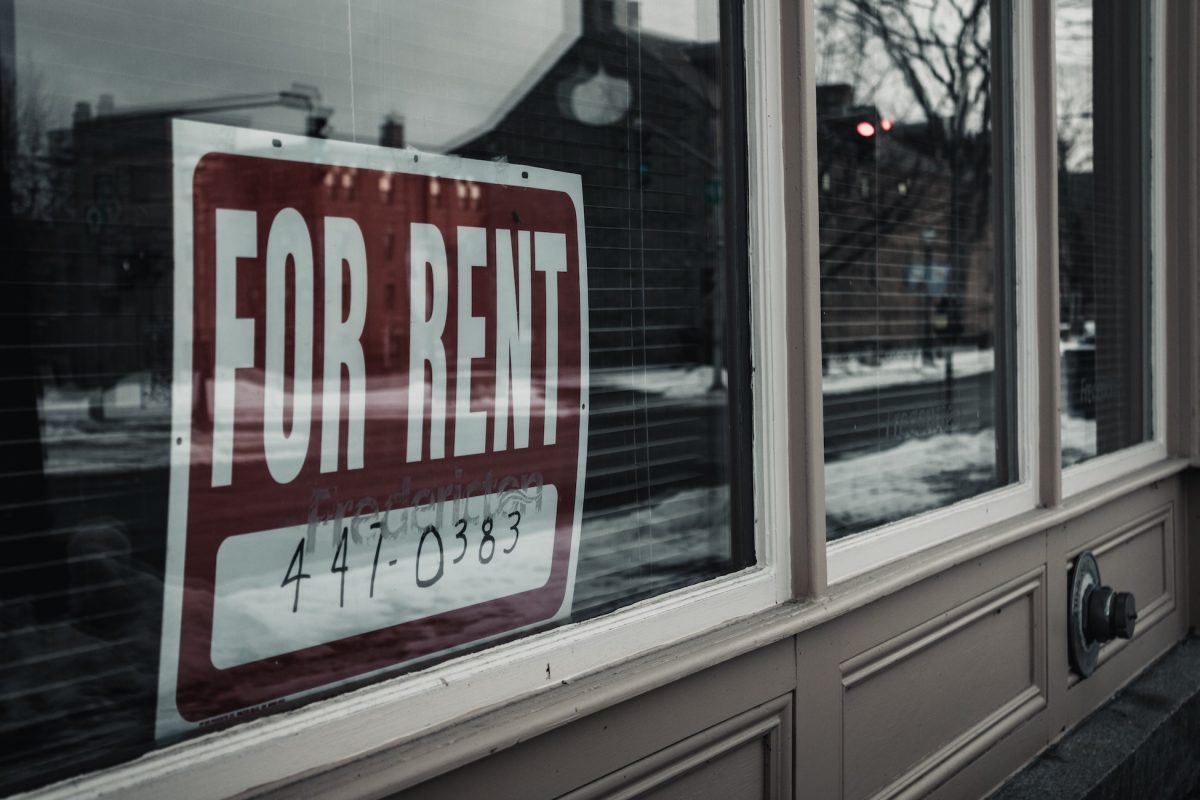Picture this: it’s 2025, you’re scrolling through your favorite social feed, and BAM—a post about the “Best Loans for Commercial Properties in 2025” catches your eye. But wait, this isn’t your grandma’s dry financial advice; this is a no-nonsense, humor-laced guide that speaks directly to your hustle. Whether you’re a millennial entrepreneur carving out your dream workspace or a Gen Z visionary looking to invest in commercial real estate, we’ve got the inside scoop on loans that will fuel your ambitions and keep you ahead of the curve.
Best Loans for Commercial Properties in 2025 Table of Contents
Understanding Commercial Property Loans in 2025
Types of Loans Tailored for Commercial Properties
Navigating the Loan Landscape: Key Considerations for 2025
How Lenders are Adapting to a Changing Market
Exploring the Loan Application Process: Tips and Tricks for 2025
Case Studies: Real-World Success in the Commercial Lending Space
Resources and Community Support: Your Next Steps
Decoding the Commercial Loan Jargon: A Handy Glossary
Your Journey to Financial Freedom in Commercial Real Estate
Commercial Lending FAQs: Your Questions Answered
Understanding Commercial Property Loans in 2025
Before you dive headfirst into the dazzling world of commercial real estate loans, let’s break it down in everyday lingo. Commercial property loans are financing options designed specifically for properties that are used for business—think office buildings, retail spaces, multifamily housing units, industrial warehouses, and even funky coworking spaces. Unlike the traditional mortgage you might use for a starter home, these loans are tailored to the unique rhythm and risks of the commercial landscape.
In 2025, commercial property loans are evolving right along with the digital age, mixing high-tech innovations with tried-and-true financial principles. No longer is it enough to simply have a good credit score and a ten-year plan. Today’s borrowers must juggle market trends, interest rate forecasts, and the ever-critical tech revolution that’s shaking up how lenders do business.
What does this mean for you? Whether you’re aiming to secure a cool new office space in a bustling urban center or launching a trendy new boutique hotel, understanding commercial property loans is your first step to making savvy financial decisions and ultimately, leveling up your investments.
Types of Loans Tailored for Commercial Properties
The commercial lending arena is as diverse as your favorite streaming playlist. Depending on your project’s stage, risk profile, and desired timeline, there are several types of loans to choose from. Let’s kick it off with the classics and then throw in some cutting-edge options that are making waves in 2025.
1. Conventional Commercial Loans
Conventional loans are the workhorse of the commercial real estate world. These loans typically come from banks or credit unions and feature fixed terms regarding interest rates and repayment. They often require a substantial down payment—think 20% or more—but provide stability once you’re locked in. For many, the predictability of a conventional loan is just as appealing as a retro vinyl record in a digital world.
With competitive interest rates and a clear repayment structure, conventional loans are a solid option for established businesses or investors with strong credit and a proven track record.
2. Small Business Administration (SBA) Loans
If you’re a small business owner with a big vision, SBA loans might just be your golden ticket. Managed by the U.S. Small Business Administration, these loans provide favorable terms and lower down payments—sometimes as little as 10%—making them ideal for newer businesses looking to expand or purchase commercial space.
SBA loans come with government guarantees, which gives lenders a safety net and, in turn, helps you secure better terms. For millennials and Gen Zers navigating the challenges of startup culture, SBA options offer an accessible and supportive financing alternative.
3. Bridge Loans
Ever needed a financial Band-Aid while waiting for long-term financing to kick in? That’s where bridge loans come into play. Bridge loans are short-term funding options designed to “bridge” the gap until more permanent financing is arranged. They’re perfect for those “now or never” moments, such as when a commercial property opportunity arises unexpectedly.
Although bridge loans typically come with higher interest rates than conventional options, their speed and flexibility mean you can seize opportunities on a moment’s notice—ideal for the go-getter with a penchant for quick decisions.
4. Hard Money Loans
When banks say “no” or the time crunch is real, hard money loans might be your secret weapon. Issued by private investors and companies, hard money loans focus more on the collateral (i.e., the property) rather than your credit history. While they come with higher interest rates and shorter terms, these loans are highly accessible and can be a brilliant option for flipping properties or handling urgent renovations.
In a fast-moving market, sometimes you just need to get your hands on cash—and fast.
5. Mezzanine Financing and Preferred Equity
For larger commercial projects where conventional loans cover only part of the financing, mezzanine financing can fill the gap. It’s a hybrid of debt and equity financing that’s typically used to bridge that funding gap without diluting ownership too much. Preferred equity stakes allow investors to receive preferential returns on their investments before profits are shared with common equity holders.
These options are popular among savvy investors who know that a well-structured financing plan is as crucial as a killer marketing strategy.
Navigating the Loan Landscape: Key Considerations for 2025
2025 brings a host of fresh challenges and tools for commercial real estate financing that can make or break your investment strategy. Here are some crucial elements to keep in mind when evaluating the best loan options:
Interest Rates: Where Are They Heading?
Interest rates are like the unpredictable plot twists in your favorite binge-worthy series. In 2025, economic shifts, inflationary trends, and global market forces all influence how lenders set their rates. While some experts predict incremental hikes, others believe competitive markets will keep rates in check. For borrowers, this means keeping a close eye on market trends and locking in favorable rates as soon as possible.
Loan-to-Value (LTV) Ratios
The LTV ratio is a measure of how much of the property’s value is financed through a loan. A lower LTV ratio typically means lower risk for lenders—which can translate to better terms for you. If you can swing a hefty down payment, you might score a lower interest rate and more flexible repayment options.
Your Creditworthiness and Financial Health
Let’s be real—credit scores aren’t just numbers. They’re a snapshot of your financial credibility. In the commercial loan space, strong credit scores can dramatically increase your chances of snagging a low-interest, long-term loan. On the flip side, if your credit report has more red flags than a warning sign convention, you might need to work on your financial health before approaching lenders.
Property Location and Condition
Location, location, location! It’s a mantra that applies as much to commercial properties as it does to residential ones. Lenders will scrutinize the property’s market position, neighborhood dynamics, and overall condition. A shining, well-maintained property in a thriving business district is far more appealing—and less risky—than one in a declining area.
The Digital Revolution in Lending
Technology has turned the commercial lending world on its head. The rise of fintech platforms means that loan applications are faster, more transparent, and often available online. Digital underwriting, automated risk assessments, and even AI-driven customer support can dramatically streamline the borrowing process. These innovations are designed to help you get the capital you need without the long, drawn-out paperwork marathon of yesteryear.
This confluence of technology and finance is not only convenient but also opens up opportunities for borrowers who might have been overlooked by traditional banks. It’s a game-changer for Gen Z and millennial investors who are accustomed to instant gratification and digital-first solutions.
How Lenders are Adapting to a Changing Market
With so many players in the market, lenders have had to evolve to meet the demands of today’s savvy entrepreneur. Let’s explore how traditional banks, fintech disruptors, and niche lenders are shifting gears to accommodate the modern borrower.
Traditional Banks Go Digital
Even the oldest institutions are getting with the program. Traditional banks are now integrating digital platforms to enhance their lending processes. This means quicker approvals, better customer service, and more competitive interest rates. Think of it as your favorite vintage coffee shop embracing online ordering without losing its quirky charm.
Fintech Startups: The New Kids on the Block
Fintech startups are the poster children for innovation in commercial lending. These companies leverage technology to analyze risk, expedite loan processing, and simplify application procedures. For example, some platforms use big data and artificial intelligence to evaluate your business metrics, ensuring that you’re not just another number in a pile of applications.
Moreover, digital lenders are often more flexible when it comes to alternative financing options, such as hard money or mezzanine financing, offering personalized loan packages that cater directly to the needs of modern investors.
Niche Lenders: Focused and Specialized
Not all lenders are equal, and that’s where niche lenders come in. These financial wizards focus exclusively on commercial properties and understand the intricacies of various industries—from hospitality and retail to tech hubs and creative spaces. Their specialized portfolios mean you can often negotiate deals that are tailored specifically for your venture.
For those in the entrepreneurial ecosystem, working with a niche lender isn’t just about securing funding—it’s about partnering with experts who speak your language and understand your vision.
Exploring the Loan Application Process: Tips and Tricks for 2025
Now that you’re armed with all the basics on commercial property loans, let’s take a detour through the renovation zone that is the loan application process. Even with digital conveniences at your fingertips, applying for a commercial loan can sometimes feel like trying to assemble IKEA furniture without instructions. Fear not, we’ve compiled a cheat sheet of tips to streamline the process and avoid those pesky pitfalls.
1. Get Your Financial Ducks in a Row
Before you start filling out applications, ensure that your financial records are orderly. Gather your business plans, cash flow statements, tax returns, and any relevant documentation. Think of this as your financial “prep work” before the big game—no one likes scrambling last minute!
2. Practice Transparency
Lenders appreciate honesty as much as a meme appreciates relatability. Be forthright about your credit history, business challenges, and the potential risks involved. This transparency builds trust and can often pave the way for more favorable terms.
3. Know Your Numbers
Familiarize yourself with critical financial metrics such as debt service coverage ratios (DSCR) and loan-to-value (LTV) ratios. Having a clear understanding of these figures not only impresses lenders but also helps you assess your own readiness to take on new debt.
4. Leverage Technology to Your Advantage
Use digital tools and platforms to monitor your loan application status and ensure that no detail is overlooked. Many fintech lenders offer portals where you can upload documents, track your application, and even chat live with a representative. Embrace these innovations to save time and reduce stress.
5. Consult with Financial Advisors
When it comes to major investments, two (or more) heads are definitely better than one. Consider consulting with a financial advisor or a commercial real estate specialist who can provide insights and guidance tailored to your unique situation.
These steps, when followed mindfully, can transform a potentially overwhelming loan application process into a streamlined, almost enjoyable, experience. And yes, we’re serious—there’s nothing more satisfying than watching your digital progress bar hit 100%.
Case Studies: Real-World Success in the Commercial Lending Space
Sometimes the best way to understand complex financial tools is to look at them in action. Let’s dive into some real-world examples that showcase how diverse borrowers have tapped into commercial property loans to fuel their ambitions.
The Urban Startup Revolution
Meet Jasmine, a millennial entrepreneur with big dreams of opening a coworking space in a hip downtown district. With a background in social media marketing and a flair for design, Jasmine knew that finding the perfect location was only half the battle. She turned to a conventional commercial loan with competitive interest rates, complemented by an SBA loan to cover renovation costs.
By combining these two financing strategies, Jasmine was able to secure over 75% of the property’s cost while preserving her equity. Today, her coworking hub isn’t just a place to work—it’s a vibrant community that hosts events, workshops, and pop-up markets, all powered by the right blend of creative financing.
An Industrial Turnaround
Then there’s Marcus, a Gen Z visionary who saw opportunity in an old warehouse on the outskirts of a bustling city. With plans to convert the space into a multi-use facility for art galleries, studios, and creative businesses, Marcus turned to a bridge loan to quickly secure the property while he refined the project's vision. Despite the higher interest rates typical of bridge financing, his agile approach allowed him to reposition and eventually refinance with a more traditional lender, cementing his spot in the competitive creative scene.
Reviving a Retail Gem
Finally, consider the story of Elena, who inherited a vintage shopping arcade in a popular tourist area. Rather than let the property fade away, she saw its potential as a boutique marketplace. Elena partnered with a niche lender specializing in commercial properties that required a unique touch—one that understood the value of heritage properties. By securing preferred equity financing, she was able to modernize the arcade while preserving its charm. Today, it’s a thriving destination for both locals and visitors, proving that with a smart loan strategy, even the most challenging assets can be revitalized.
These case studies highlight that whether you’re innovating a startup, revamping an industrial facility, or breathing new life into a retail space, the right commercial loan can be the catalyst for success. Your story might just be the next one we brag about at financial community meet-ups!
Resources and Community Support: Your Next Steps
Now that you’re well-versed in the universe of commercial property loans, it’s time to take proactive steps toward financial empowerment. From online communities to hands-on workshops, here are some resources and support networks that can help you navigate this dynamic field.
Online Financial Communities
Join social media groups, forums, and LinkedIn communities dedicated to real estate investment and commercial lending. These spaces are treasure troves of practical advice, recent success stories, and insider tips from professionals who’ve weathered the ups and downs of the market.
Webinars and Virtual Workshops
In 2025, knowledge isn’t just power—it’s a click away. Participate in webinars and virtual workshops hosted by financial experts, commercial loan officers, and real estate influencers. These sessions offer the latest market insights, innovative financing strategies, and Q&A opportunities where you can get your burning questions answered.
Financial Advisors and Mentorship Programs
Consider partnering with a seasoned financial advisor who specializes in commercial real estate. Not only can they help you craft a tailored loan strategy, but mentorship programs can also connect you with successful investors for ongoing guidance.
Local Real Estate Investment Groups
Don’t underestimate the power of local networking. Many cities now have dedicated real estate investment groups that provide in-person (or hybrid) opportunities to learn, share, and collaborate with fellow investors who are eager to exchange insights and support each other’s growth.
Online Tools and Loan Calculators
Empower yourself with digital tools like online loan calculators, market trend trackers, and financial planning apps. These resources help you simulate different financing scenarios, compare interest rates, and make data-informed decisions.
Every step you take towards educating yourself and tapping into community support is an investment in your business’s future. Embrace the available resources, stay curious, and remember that every financial decision you make today sets the stage for tomorrow’s success.
Decoding the Commercial Loan Jargon: A Handy Glossary
The world of commercial lending is full of industry lingo, acronyms, and buzzwords that can sometimes feel like a foreign language. To keep things crystal clear, here’s a quick glossary to help you sound like a financing pro at your next pitch:
- DSCR (Debt Service Coverage Ratio): A measure of a property’s cash flow relative to its debt obligations. A higher DSCR means the property generates enough revenue to cover its loans.
- LTV (Loan-to-Value): The ratio of a loan amount to the total value of the property. A lower LTV ratio generally indicates less lending risk.
- SBA (Small Business Administration): A U.S. government agency that provides support to small businesses through favorable loan programs.
- Bridge Loan: Short-term financing that “bridges” the gap until long-term funding is secured.
- Hard Money Loan: Asset-based loans provided by private investors, often with higher interest rates and shorter terms.
- Mezzanine Financing: A hybrid of debt and equity financing used to cover funding gaps, typically for larger transactions.
- Preferred Equity: Equity that offers preferential returns before common shareholders receive any dividends.
- Underwriting: The process lenders use to assess risk and determine the likelihood of loan repayment.
- Fintech (Financial Technology): Technological innovations that streamline financial services, including loan processing and risk management.
- Collateral: An asset pledged as security for a loan that can be seized if repayments aren’t made.
Keep this glossary handy as you navigate the commercial lending landscape—you’ll not only sound confident but also fully understand the nuances behind the numbers.
Your Journey to Financial Freedom in Commercial Real Estate
Embracing the commercial property lending sphere is more than just securing funds—it’s about building a foundation for future success. By understanding the different types of loans, keeping an eye on evolving interest rate trends, and leveraging the latest digital tools, you’re poised to make financially-savvy decisions that align with your ambitious goals.
In a world where every percentage point can make a difference, knowing your options is like having a secret weapon. With knowledge in hand, a dash of entrepreneurial spirit, and the support of a vibrant community, you can navigate the commercial loan landscape with confidence and style.
Remember, the best investment you can make is in yourself—whether it’s by enhancing your credit score, networking with industry innovators, or continuously learning about new financial tools. Take the plunge, trust your instincts, and transform that commercial space dream into a profitable reality.
Your journey to financial freedom is a marathon, not a sprint. With perseverance, smart choices, and a willingness to adapt to market trends, you’ll not only secure the best loans for your commercial properties but also lay the groundwork for a thriving business that resonates with today’s modern investor.
So go ahead—explore the possibilities, seize the opportunity, and let your commercial real estate adventure begin. May your deals be sound and your ROI ever in your favor!
Commercial Lending FAQs: Your Questions Answered
We know that diving into the world of commercial property loans can spark a ton of questions. Here are some frequently asked questions that address the common concerns of savvy borrowers:
1. What exactly qualifies as a commercial property loan?
Commercial property loans finance real estate that is used for business purposes, including offices, retail centers, industrial warehouses, and multi-family housing complexes. These loans are structured differently from residential mortgages to account for the unique risks and revenue streams of business properties.
2. What are the main types of commercial loans available in 2025?
The primary types include conventional commercial loans, SBA loans, bridge loans, hard money loans, and mezzanine financing with preferred equity options. Each has its benefits depending on your project's size, timeline, and risk profile.
3. How do interest rates in commercial loans compare to residential mortgages?
Commercial loan interest rates typically tend to be slightly higher than residential mortgages due to the increased risk associated with business properties. However, competitive market conditions and digital innovations have made it possible to secure favorable terms.
4. What is the role of technology in the commercial lending process?
Technology streamlines everything from the application process to risk assessment and loan management. Fintech innovations like automated underwriting, real-time tracking, and digital customer support have significantly reduced the hassle and turnaround time.
5. Can first-time commercial property investors qualify for these loans?
Yes, with proper preparation, a solid business plan, and sometimes the support of SBA or alternative lenders, first-time investors can secure funding. It’s important to work on building a strong financial profile and leveraging expert advice.
6. How important is the loan-to-value ratio in the approval process?
The LTV ratio is a critical measure for lenders because it indicates the risk of the loan. A lower LTV ratio generally results in better terms, as it shows that you’re investing a significant amount of your own capital.
7. What factors should be considered when choosing between a conventional loan and an SBA loan?
Consider factors like down payment requirements, interest rates, repayment terms, and any government backing. SBA loans often offer more accessible terms for small businesses, while conventional loans may provide stability for established ventures.
8. Are there specific credit score requirements for commercial property loans?
Yes, most lenders will look for a strong credit history and appropriate financial documentation. Requirements can vary significantly depending on the loan type and lender, so it’s best to consult with your preferred financing institution.
9. What role do local market conditions play in securing a loan?
Lenders assess the location and condition of the property, as well as local economic trends. A thriving market generally means lower risk, which can lead to more favorable financing terms.
10. How can borrowers stay updated on the latest trends in commercial property financing?
Engaging with online communities, attending webinars, following leading financial advisors on social media, and subscribing to industry newsletters are excellent ways to stay informed.
Your Next Steps Toward Securing the Perfect Loan
Now that you’ve absorbed a treasure trove of information on commercial property loans, it’s time to put your newfound knowledge into action. Here’s how you can get started:
Step 1: Crunch Your Numbers and Assess Your Needs
Grab a cup of your favorite brew, fire up your loan calculator app, and dive into your financials. Determine the amount you need, the property’s potential, and your expected return on investment (ROI). This clarity will guide you in choosing between conventional, SBA, bridge, or hard money loans.
Step 2: Research Lenders and Loan Options
With your financial blueprint in hand, start comparing lenders. Read online reviews, join discussions in financial forums, and reach out to both traditional banks and fintech startups. Look for lenders whose values align with your modern, digital-forward approach.
Step 3: Prepare Your Documentation
Organization is key. Ensure your business plan, financial statements, market analysis, and all the other requisite documents are readily accessible. A well-prepared file not only speeds up the loan process but also sends a clear message of professionalism.
Step 4: Schedule Consultations and Ask Questions
Don’t hesitate to talk directly with mortgage officers or financial advisors. Ask about interest rate projections for 2025, flexible repayment options, tech integrations, and any fees that might be hidden in fine print. Knowledge is your most valuable asset.
Step 5: Leverage Digital Tools
Use online applications, digital underwriting platforms, and budgeting apps to streamline the process. With everything in one digital hub, you can track your application’s progress in real time—no more endless waiting in line.
Taking these steps brings you closer to the perfect commercial property loan that not only funds your project but fits your futuristic vision. Approach each step with confidence, and remember, your financial journey is an exciting adventure.
Your Journey to Unprecedented Financial Wellbeing
As you set out on your journey to secure the best loans for commercial properties in 2025, think of every step as part of a larger narrative—a narrative where you are the protagonist, armed with knowledge, innovation, and a steady commitment to financial success. This is your story, and the loan isn’t just a number on paper; it’s the stepping stone to manifesting that entrepreneurial dream.
The commercial real estate market is dynamic and competitive, but with the right loan structure, your business can soar to new heights. Embrace the digital revolution in lending, harness the power of community support, and stay on top of market trends. In a landscape where financial decisions impact every aspect of your business, being informed is not a luxury—it’s a necessity.
Whether you’re reimagining an old space or breaking ground on a futuristic project, the possibilities are endless. Let your creativity guide you, trust the process, and remember that every smart financial move is a vote for your future. Here’s to confidently stepping into a future where commercial success is not just an aspiration but a reality.
So go on—explore your options, make informed choices, and watch as your vision transforms into an influential business. To your financial health, your innovative spirit, and a future where every deal is a win!













